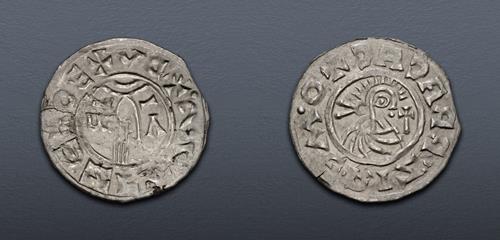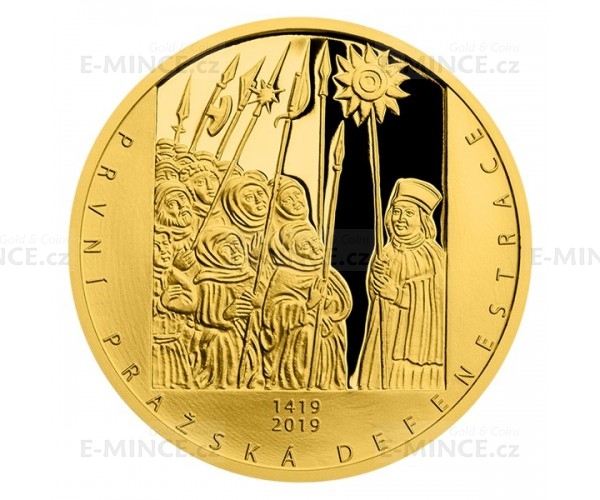Excellent News To Numbering Prague Mint Medals
Wiki Article
How Is A Plaster Replica Taken To Be Scanned To Create An Accurate Digital 3d Model Of Gold-Plated Coins Or Medals?
The process involves scanning a maquette in order to create a 3-D digital model of gold coins or medals. The equipment used is specially designed to record the specifics and dimensions of the model into a digital version. Digital replication serves a variety of functions in the manufacturing process. the Scanning Process Works
3D Scanning 3D scanners with high-resolution are used to capture all the details and dimensions of the model. These scanners utilize various methods like laser scanning and structured light to capture exact dimensions and geometrical forms.
The scanner emits beams of light or lasers onto the models' surface. The scanner records these reflections and distortions. This data is used to create an accurate model.
Data Collection- As it travels across the plaster models the scanner collects a large number of data points. These data points are utilized to create a digital model of the model, including its geometry, contours, details, etc.
Conversion to 3D Model. Specialized software transforms information gathered from data into a 3D representation. The model is a replica of the dimensions and physical features of the maquette made of plaster.
The Reasons to Create the Digital 3D Model
Precision and Replication Digital 3D models permit precise reproduction of the model's specifications and dimensions. This is essential to ensure that the gold coins or medals that are produced match the intended style.
Facilitating ModificationsDigital models are easily modified or refined. Designers are able to modify their designs without affecting the plaster maquette.
Compatibility with Manufacturing Processes Compatibility with Manufacturing Processes Digital 3D Models are compatible with a variety of manufacturing processes, such as 3D printing or CNC machining. This facilitates the manufacturing of dies and molds for mass production.
Digital 3D models and archives for documentation Digital models are archived as records of the design. They can be stored digitally for reference in the future, or for reproductions, or for preserving the history of the design.
By scanning models of plaster and creating 3D digital models, manufacturers and designer can speed up their processes of production, ensure accuracy of replication and utilize advanced manufacturing technology to produce gold medals and coins with a high degree of precision and fidelity. Read the most popular Scanning and 3D Modeling Czechoslovakia gold medals blog recommendations. including buy gold bars from bank, krugerrand gold coin, 1 ounce gold bullion, liberty gold coin, canadian gold maple leaf, george washington gold dollar coin, buy gold biscuits from bank, purchase gold coins, st gaudens gold coin, gold coin 24k price and more.

What Can Laser Technology Utilized To Polish The Surface Of A Die Or Master Hub For Gold Coins Or Medals?
Laser technology is utilized to make master hubs, or dies, for gold coins and medals to obtain exact details and refine the surface for greater precision. This is the way laser technology can be utilized to achieve this Surface Refinement
After initial machining, the surface of the die or master hub is polished using laser technology. It is able to smooth out imperfections and remove burrs.
Detail Enhancement-
Laser ablation and engraving are used to add or enhance intricate details on the master hub or die. Lasers can be used to precisely etch and remove the material. This allows for the creation of complex patterns, fine lines, or designs that are difficult to achieve using conventional machining.
Microstructuring-
Laser microstructuring involves creating microscopic details or textures onto the die's surface. This method is employed to add specific textures or patterns which enhance the visual appeal or security characteristics of medals or coins.
Surface Hardening or Treatment
Lasers are often used to treat or harden the surface of dies or master hub. This can improve the durability and wear-resistance of the surface.
Precision Changes
Laser technology permits precise adjustments and corrections to the die or master hub, with no impact on the overall geometry. It enables adjustments to the surface, which can address any discrepancies or imperfections that could affect the quality of the forged medals or coins.
Controlled Material Removal
Laser ablation allows for precise material removal. This is particularly useful in areas that require fine details to be established. This is a non-contact removal method that preserves the integrity of surrounding areas.
Laser technology can be utilized to refine the surface of dies and master hubs which results in greater detail, improved surface quality, and increased accuracy. It enhances the traditional machining process, allowing for the exact manipulation and improvement of the characteristics of the die's surface essential for the production of premium gold coins or medals. Follow the best laser processing Czechoslovakia gold coins blog recommendations. including gold coin prices, gold coin values, st gaudens double eagle, krugerrand, price of 1 oz of gold, canadian gold maple leaf coin, 1972 gold dollar, $50 gold coin, gold buy bullion, 5 cent piece and more.

How Can You Achieve Smooth Or Matte Finishes Using The Process Of Sandblasting? And How?
This method is used for achieving specific textures or finishes that include matte and textured surfaces, on the surface of medals or coins. How and why do we use this method?
Surface Preparation: The coin is placed inside a box or cabinet fitted with an air compressor and an nozzle. The chamber is typically enclosed to keep the abrasive used in the process contained.
Abrasive Material Select - Abrasive particles like glass beads, aluminum oxide silica carbide and sand are propelled at high speed to the surface.
High-Pressure System - The abrasive particles are driven onto the surface with compressed air, or by other high-pressure systems. The surface texture is created by the force and speed of the particles.
Texture Creation- The impact of the abrasive particles on the surface creates a textured or matte appearance by altering the surface's topography. This technique lets you roughen specific areas, or create a texture that's uniform across the surface.
Controlled Application - Sandblasting's intensity as well as the duration and angles of application can all be adjusted to create different textures or finishes. Different pressure levels and abrasives produce different results.
Sandblasting: Why is it necessary?
The process of sandblasting allows the creation of different surface textures, or even mattes, frosted, or grainy surfaces. This creates an aesthetic appeal and adds unique characteristics to coins or medals.
Aesthetic Enhancement - Sandblasting alters the look of the surface, decreasing the shine while also diffusing light reflection. This improves the aesthetic appeal of the coin or medal. Matte finishes be a good example, for instance, they can highlight certain design elements because they minimize reflections.
Anti-glare Property - Sandblasting creates matte or textured surfaces that lessen reflections, glare and make the medal or coin more appealing.
Contrasting Design Elements. Sandblasting produces contrast between polished areas and textured ones on the coin. Sandblasting can be used to highlight certain design elements or to create visual depth.
Sandblasting can be customized to permit artistic expression and also allows medals or coins to be created with distinct textures or finishes that are unique to the design.
Sandblasting creates different textures and finishes on the gold coins and medals. This enhances the overall appeal, appearance and aesthetics. Read the best sandblasting Czechoslovakia gold medals site advice. including gold medal of olympic, 1975 gold penny, 24k gold coins prices, congressional gold medal, gold buffalo, cost of gold coins, bullion dealers, gold panda coin, saint gaudens gold coin, 24k gold bullion and more.

How Do Gold Blanks Get Fed And Stamped With High Pressure Into Coin Presses During Minting?
In the process of minting gold blanks are loaded into coin presses, where they are stamped under pressure to turn them into finished pieces of gold or coins. This is a brief overview of the steps in loading blanks.
A feeder system is connected to the coin press. The system is loaded with gold blanks that have been prepared and checked for quality. The feeder system is responsible for maintaining a continuous flow of blanks to the coin press.
Feeding Blanks to the Press
The feeder system guides each blank into the zone of the coin presses. The feeder system makes sure that every blank is precisely placed for stamping.
Alignment & Positioning
In the press, the blanks are aligned and positioned in the striking chamber, ensuring that they are perfectly aligned and oriented for the stamping process.
Striking Under High Pressure
The coin press puts an intense pressure on gold blanks with two dies, one stationary and one moving. The stationary die is the negative image of the coin's design and the one that moves is the hammer that strikes the blank.
The moving die hits the blank with a lot of force and transfers the design on the surface of the blank. The dies' pressure imprints the designs, which result in the reliefs raised and the details of the coin or medal.
Repeated Striking -
To produce an image or design that is sharper and better defined, multiple strikes can be used on high-quality coins or collectible editions. Each strike refines the detail inside the blank.
Ejection and Collection-
Once struck, the freshly minted medals or coins are ejected from the press and collected in containers or trays. Stamping designs are then checked for quality control in order to make sure they conform to the standards and requirements.
Post-Processing-
In accordance with the specifications for mint design Coins and medals may undergo additional treatments such as edge lettering or reeding or post-strike treatments.
The stamping process under high pressure is vital as it imparts the desired design on the gold blanks and transforms them into medals or coins that are ready to be used in circulation, collection or commemoration. This process is extremely precise because any alterations in alignment or pressure could affect the appearance and quality of the final product. Check out the recommended minting Czechoslovakia gold medals website tips. including 1 10 gold eagle, gold bullion, 2000 p sacagawea dollar, american eagle gold coin 1 oz, price of 1 oz of gold, gold morgan dollar, gold penny, olympic games gold medal, bullion dealers near me, coin gold bullion and more.
